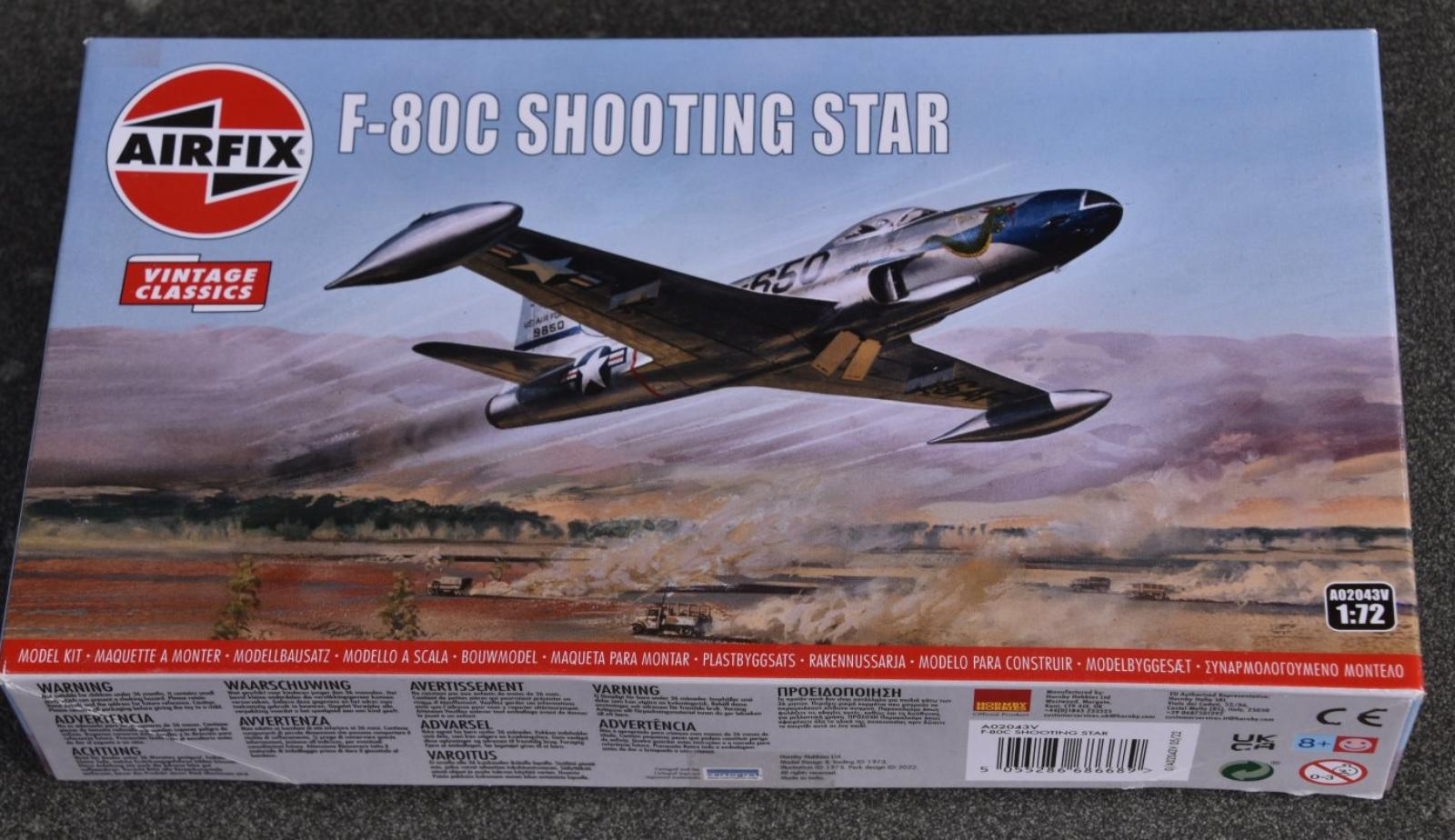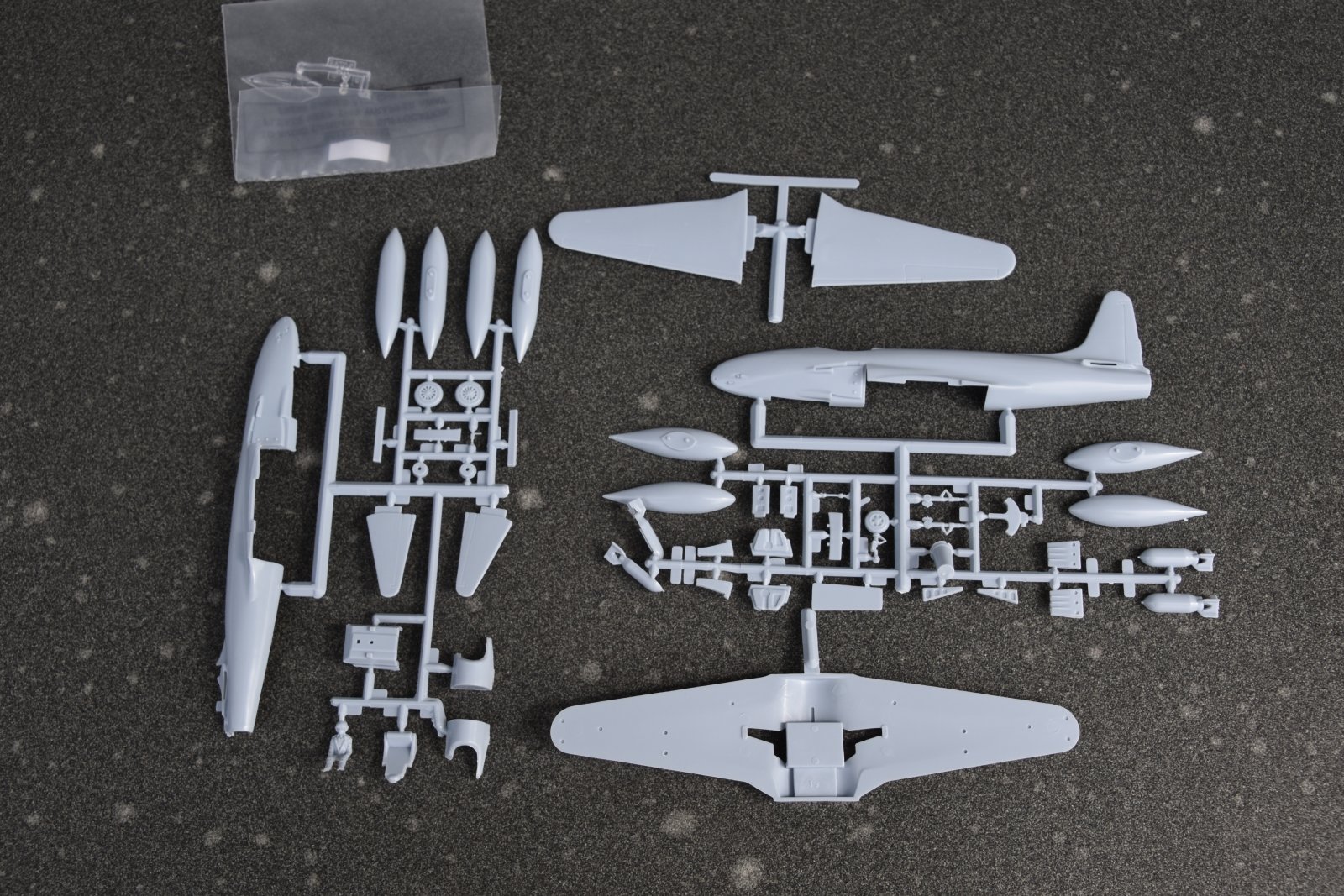Manufacturer: Airfix
Scale: 1/72
Additional parts: 3D printed components
Model build: Jun-Oct 2025

Manufacturer: Airfix
Scale: 1/72
Additional parts: 3D printed components
Model build: Jun-Oct 2025
The humid summer night of August 17, 1989, was shattered by the wail of emergency sirens. From the dark horizon of Osaka Bay, the sea erupted in a geyser of white foam and radioactive steam. A shadow rose against the moonlight, vast, scaled, and terrible—Godzilla had returned.
The beast’s roar rolled across the coast like thunder, shaking glass from windows miles away. Streets clogged with evacuating civilians. The skyline glowed red as the monster’s dorsal plates began to hum, charging with atomic power.
At JASDF Itami Air Base, klaxons screamed. Pilots ran to their waiting Type 85 Mōko aircraft, engines spooling with a banshee’s shriek.
Colonel Takeshi Arakawa, commander of the 8th Squadron Shugosha, pulled his helmet tight.
“Remember your training. This is what the Mōko was built for. We hit him low, hit him hard, and keep hitting until he goes down. Japan depends on us. Guardians—launch!”
The runway glowed in blue lights as the first wave took off—three squadrons, thirty-six aircraft total, their afterburners carving fire across the night sky.
Godzilla reached the harbor, its clawed feet crushing tank battalions like toys. With a roar, it unleashed a searing atomic breath, a blue-white beam that incinerated an entire district in seconds.
“Shugosha, attack run, now!”
The Mōko jets screamed in at tree-top level, weaving between skyscrapers before pulling up at the last second. Six Mk-82 bombs tumbled from each aircraft, streaking through the night before slamming into Godzilla’s armored hide. The city lit up in a chain of fireballs.
Smoke swallowed the monster. For a moment, silence.
Then the smoke parted. Godzilla stood unshaken, its reptilian eyes glowing with fury. With a sweep of its tail, it smashed through a high-rise, debris raining down like shrapnel.
“Damn it—he’s barely scratched!” shouted Captain Rei Nakamura of the 5th Squadron Hakurō.
Godzilla’s spines crackled again. A blinding beam shot skyward, vaporizing a trio of aircraft mid-dive. Flaming wreckage rained into Osaka’s streets.
The 13th Squadron Inja executed evasive rolls, darting away at impossible angles. Their aircraft’s raw thrust-to-weight ratio gave them agility no modern fighter could match. But the danger was relentless—waves of radioactive heat warped their instruments, forcing pilots to rely on instinct.
“Keep low! Stay below the charge buildup!” Arakawa ordered, sweat dripping under his mask.
The Mōko jets screamed over rooftops, popping up only long enough to unleash more bombs and missiles. Again and again they dove, the city beneath them a battlefield of smoke and fire.
The battle raged through the night and into the following day. Each squadron flew sortie after sortie, cycling between hastily refueled jets and re-armed payloads. Pilots fought exhaustion, their bodies pushed to the brink.
Osaka burned. The streets were craters. The bay was choked with debris and wrecks of sunken ships. Yet the Mōko jets kept coming.
On the second day, Godzilla staggered for the first time. Its massive frame, pounded by hundreds of bombs, faltered. The monster roared in fury and pain, stumbling back toward the waves.
“Press the attack! Don’t let him breathe!” Nakamura cried, diving headlong, loosing his final payload directly against Godzilla’s chest. The explosion rocked the shoreline, forcing the monster to retreat further.
As the sun set on August 18, 1989, the final strike pushed Godzilla into the ocean. The beast roared one last time before sinking beneath the waves, leaving only boiling water and silence in its wake.
The surviving Mōko pilots circled over the coastline, their fuel gauges nearly empty. Exhausted cheers filled the comms.
Colonel Arakawa’s voice broke through, ragged but resolute:
“Osaka still stands. Japan still stands. We did it.”
The cost was staggering—half the squadrons lost, entire districts reduced to ashes. But the Type 85 Mōko had done what no modern jet could. With their simplicity and raw aggression, they had stood against a god.
In the years that followed, the aircraft would be retired, displayed in museums, their paint scorched and scarred from battle. But for the pilots who survived, and for the people of Japan, the memory remained:
When the monster came, the Guardians, the White Wolves, and the Hermits rose to fight.
And for 48 hours, humanity fought back against Godzilla—and won.

In the summer of 1983, a surprising joint venture between Boeing and Kawasaki was announced: a light ground-attack aircraft based on the Boeing Skyfox design. This development raised eyebrows among military analysts, as the Japan Air Self-Defense Force (JASDF) was strictly a defensive force at the time. A small, limited-range attack plane seemed to directly contradict Japan's pacifist constitution.
At a press conference on August 18, 1983, a Boeing representative offered a curt "no comment" regarding the aircraft's purpose. His Japanese counterpart, Hiroshi Tanaka, offered a cryptic response: "You will see when it will be needed." The aircraft, later named the Type 85 Mōko, also featured a significantly higher thrust-to-weight ratio than the original Skyfox, further puzzling aviation experts.
The first prototype took flight in December 1984, and the first production models entered service in January 1986. The aircraft were assigned to three squadrons:
第8飛行隊 "守護者" (Dai-Hachi Hikōtai "Shugosha") - The 8th Squadron "The Guardians"
第5飛行隊 "白狼" (Dai-Go Hikōtai "Hakurō") - The 5th Squadron "White Wolf"
第13飛行隊 "隠者" (Dai-Jūsan Hikōtai "Inja") - The 13th Squadron "The Hermits"
Over the next few years, the three squadrons conducted intensive training operations along Japan's coastline. Their dangerous, low-altitude maneuvers led to the loss of three aircraft by 1989. International publications speculated that these exercises were in preparation for a potential naval invasion by Soviet or Chinese forces, though the Mōko's simple design seemed to limit its survivability in modern air combat.
The Day Godzilla Came
Then came August 17, 1989. As Godzilla emerged from the ocean and approached the Japanese mainland, a quick press statement was issued by Hiroshi Tanaka. He declared, "This is what we prepared and trained for. Let's hope that the Mōko will do its job."
All three squadrons launched their Type 85 aircraft, attacking Godzilla as it made landfall near Osaka. While the monster's energy rays and radiation neutralized more modern equipment, the Type 85's simpler, low-tech design allowed them to bypass its defenses and continue their attack. Each plane flew multiple sorties, dropping its payload of six Mk-82 bombs on the target.
After 48 hours of intense fighting, the continuous attacks finally pushed Godzilla back into the ocean, where it disappeared. Although the destruction in Osaka was immense, the JASDF successfully defended Japan with the Type 85 Mōko.
In the following years, the aircraft were slowly retired from active service. However, their role in the defense of Japan was never forgotten.
The model shows a Type 85 Mōko oft he Dai-Hachi Hikōtai "Shugosha" - The 8th Squadron "The Guardians" which was able to fly three successful attack on Godzilla.

The Type 85 Mōko is primarily based on an old Airfix 1/72 P-80 Shooting Star kit, first released in 1973.
To create the Type 85, two 3D-printed engines were added to the rear of the aircraft, inspired by the layout of the Boeing Skyfox. The engines, originally from a generic business jet model, were resized to the correct dimensions.
The horizontal stabilizer was repositioned, while the original engine air intakes and exhausts were sealed off using custom 3D-printed parts. Additional bomb pylons were sourced from the spare parts box.
For finishing, the model was painted with Revell Aqua Color paints. Decals came partly from spare sets, with some custom-made to complete the design.